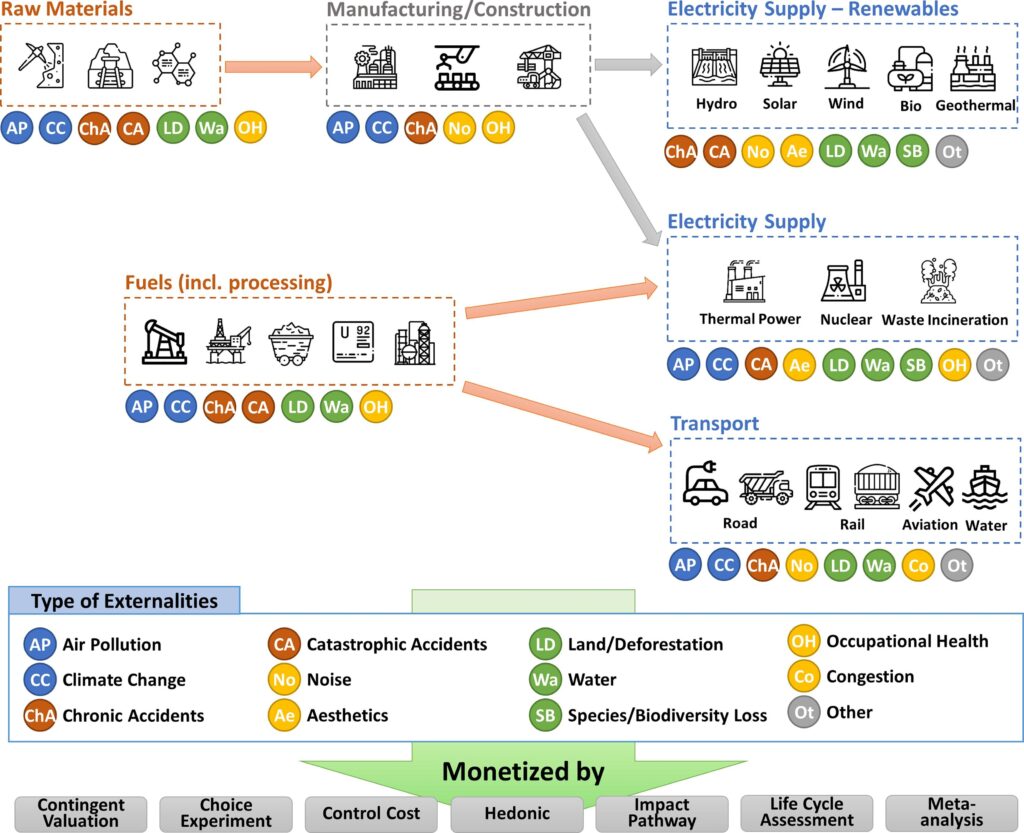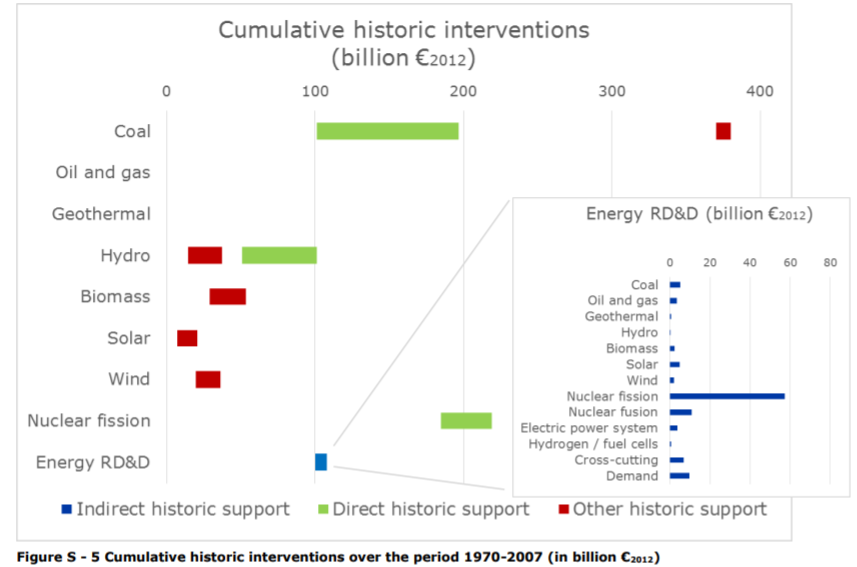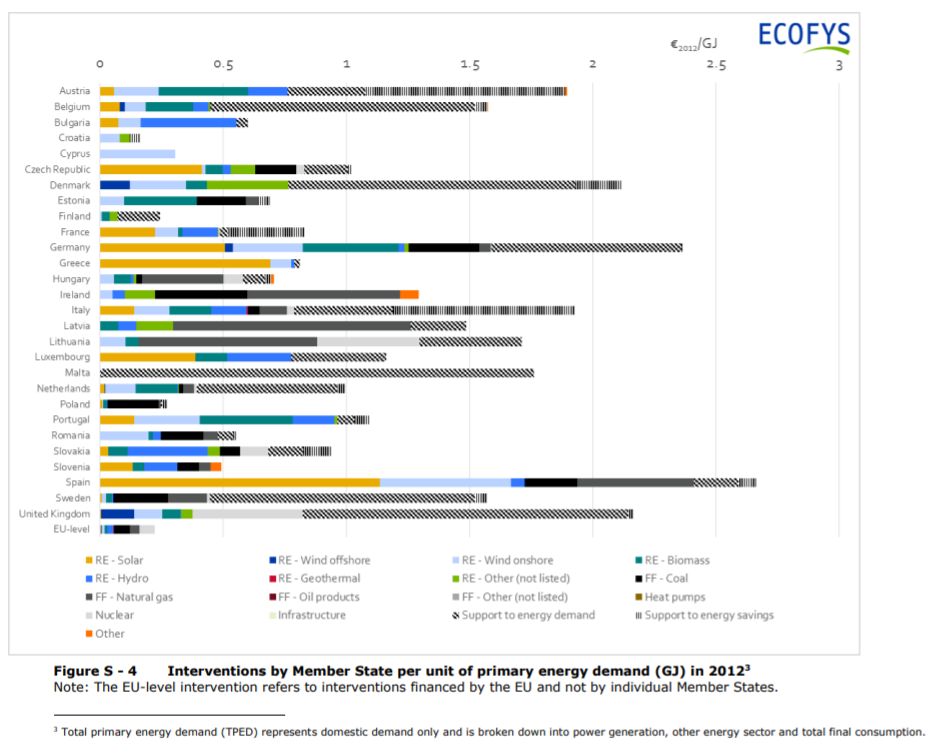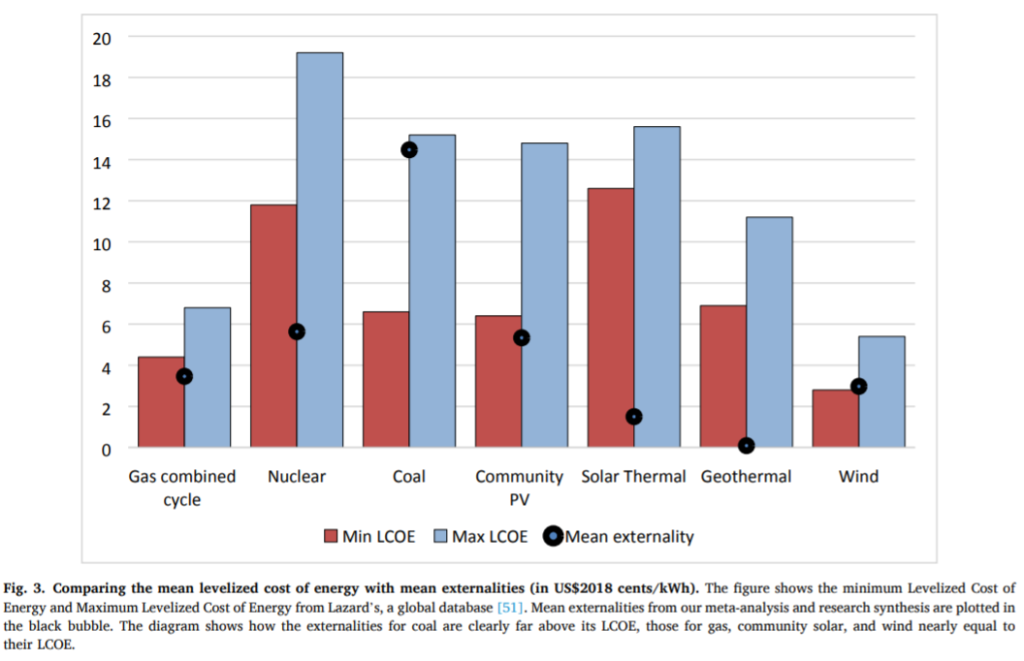
This post is part of a series where I look at and into the true cost of certain goods and services. When in the previous post I looked at subsidies and the True Cost (associated with the True Price) for oil and gas, this time I’d like to look into what we know about the True Cost of Energy. Not just about fossil fuels, but indeed across the breadth of the energy spectrum.
The question therefore is: What are the total costs – the True Cost, i.e. including what is commonly called ‘externalities’ – of the different types of energy we use globally?
But to begin: again a few relevant definitions.
Relevant Definitions: What is a …?
Externality?
An externality, which can be positive or negative, is an activity of one agent (for example, an individual or an organisation, such as a company) that affects the well-being of another agent and occurs outside the market mechanism. (Source).
In other words: it is an unexpected cost or benefit resulting from an economic activity that affects people other than those engaged in that activity, and where there’s no proper compensation. To that purpose it is important to include all lifecycle components.
The following graphic outlines such lifecycle components and their externalities for both energy – relevant for the current post – as well as transport:

B. K. Sovacool, J. Kim, M. Yang: ‘The hidden costs of energy and mobility: A global meta-analysis and research synthesis of electricity and transport externalities’, Energy Research & Social Science, Volume 72, 2021, ISSN 2214-6296.
Levelised costs of energy (LCOE)?
The levelised cost of energy, or: levelised cost of electricity, is a measure of the average net present cost of electricity generation for a generating plant over its lifetime. It is used for investment planning and to compare different methods of electricity generation on a consistent basis. The LCOE ‘represents the average revenue per unit of electricity generated that would be required to recover the costs of building and operating a generating plant during an assumed financial life and duty cycle’. (Source: Wikipedia)
In simpler terms: it is the lifetime costs of an energy system divided by its energy production. But: it does not normally include externalities in the calculation.
True Cost of different types of Energy Generation: The Status Quo
As said before: The evidence is crystal clear that fossil fuel subsidies are environmentally harmful and undermine global efforts to tackle climate change.
But just how do different types of energy generation compare to each other when it comes to ‘collateral damage’?
A paper, published in the Journal of ‘Energy Research & Social Science’ in February 2021, as well as the EU-financed report by Ecofys from 2014 on subsidies (incl. Annexes), and its equally EU-financed 2016 successor on prices and costs, give us some insights.
Insight 1: State Support, above and beyond ‘just’ subsidies’, tell an insightful story
The Ecofys reports mentioned above sadly only look at EU member states, and even more unfortunately have not been updated since their release. Yet, the findings of their time, notably those in the two following graphs, tell a very interesting story.
For one: Subsidies – direct support – is part of the story and an important one.
But once that one looks above and beyond traditional subsidies, at ‘interventions’ overall (i.e. the breadth of state support given across various ‘genres’, incl. e.g. R&D), it gets even more interesting.
Looking at the historic cumulative value shows that in the past the political view on energy supply diversity was very narrow, and really focused on fossil fuels, nuclear and hydro:

But change over time is an important variable, more so since we entered the new millennium and the science on the one hand, and voters expectations on the other, require bigger investments in renewable energy sources. A fact is clearly reflected in the 2012 status quo:

Insight 2: The True Cost of energy generation can be as big as its lifetime cost
The shift in political and public demand for renewable energy sources may certainly be a reason for the shifted allocation of public money. The question it does not answer though is if indeed the shift is truly going into the right direction.
Merely phasing out fossil fuel may not be sufficient – after all we do know that all replacements come with decisions, side effects, and potential collateral damage themselves.
This is why looking at the full cost – the True Cost – of different energy types is essential.

Once doing so, and therefore taking ‘externalities’ into account: we are in for a couple of surprises:
- Beyond coal, also wind, gas, and community solar power, do not score very well at all, and indeed generate (nearly) as much externalised costs as lifetime investment costs.
- Nuclear on the other hand – and possibly against most people’s intuition – scores rather well as even with the costs for collateral damages included, the totals remain ‘viable’.
It is also interesting to see that in some instances a given type of energy source needs to be looked at somewhat more granularity than is commonly done. Else: Who would have thought that community solar is not necessarily a promising way forward, whereas ‘solar plant energy’ (i.e. the industrialised cousin) indeed is of interest?
Conclusion
Differentiated insights such as those above are essential when considering what energy transition pathways are available to us.
Not only do they bullshit-check any kind of lobbying claim – of any couleur – , but they also allow to double-check if indeed public money is spent for ‘future fit’ energy solutions.
After all: The challenge of finding genuinely suitable energy transition pathways forward does not stop at replacing non-renewable energy sources through renewable ones. But indeed forces us to look at all the trade offs associated with different types of energy generation. Non-renewable attributes are no doubt a key attribute in this conversations – and so are demand curves for other extractive ingredients such as e.g. bauxite for aluminium of wind turbines, storage locations for highly hazardous waste for nuclear, or the environmental ecosystem destruction hydro generation encompasses.
It never can be understated: All decisions come with trade offs.
The best we can do at this moment is to look at the overall system. Since we must replace fossil fuels – and there is no doubt about it – what remains to be done is a thorough job of looking at the implications of doing so, and avoid, as far as we possibly can, overly simplistic solutions that may cause irreparable collateral damage. Let’s avoid driving out the devil with the beelzebub if we can.
This though requires us to better understand the True Cost of each source of energy generation.
And it also requires us apply the same level of scientific scrutiny to all imaginable transition pathways

